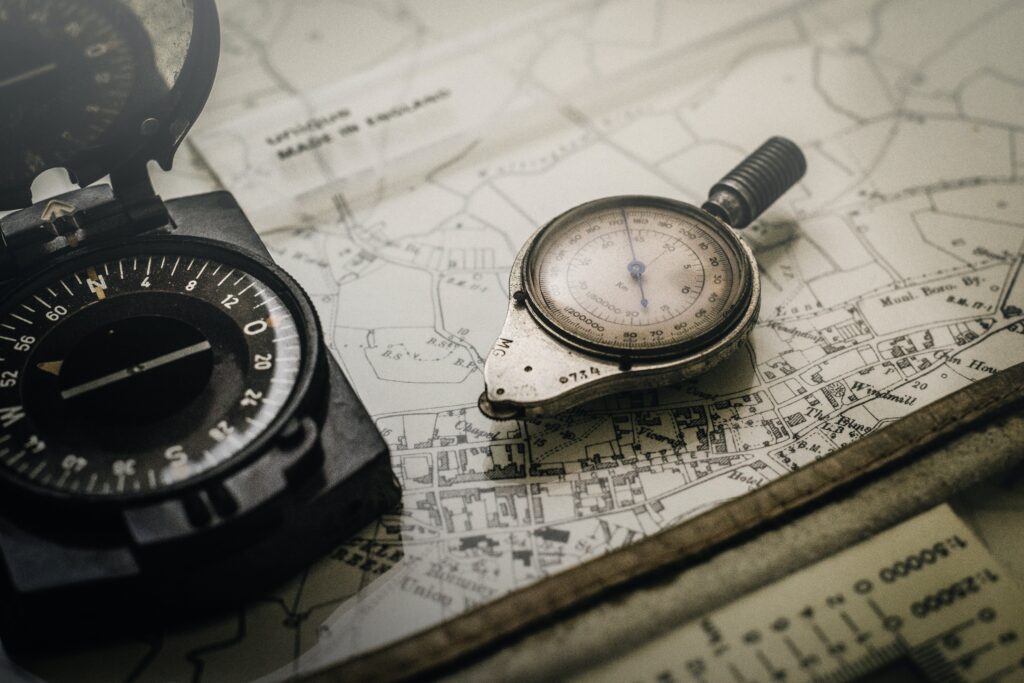The compass, a simple yet invaluable tool, has been guiding explorers and travelers for centuries. Its ability to indicate direction has made it essential for navigation on land, sea, and air. But how does this seemingly simple device work?
A compass is a navigational instrument that shows the cardinal directions (north, south, east, and west) and their intermediate points. It typically consists of a magnetized needle that aligns itself with the Earth’s magnetic field, pointing towards the magnetic north pole.
This needle is attached to a compass card or compass rose, which is marked with the cardinal directions and their degrees. The compass card is typically enclosed in a case with a transparent cover, allowing the user to view the needle’s alignment with the compass card.

How Does a Compass Work?
The Earth acts like a giant magnet, with its magnetic poles located near the geographic poles. The magnetic field exerts a force on the magnetized needle in a compass, causing it to align with the lines of magnetic force. The needle always points towards the magnetic north pole, which is located approximately 1,100 kilometers (684 miles) away from the geographic north pole.
There are many different types of compasses, each with its own unique features and applications. Some of the most common types include:
- Traditional compass: This is the most basic type of compass, consisting of a magnetized needle and a compass card.
- Lensatic compass: This type of compass has a lens that allows the user to sight on an object and take a bearing.
- Digital compass: This type of compass uses electronic sensors to determine direction and often includes additional features, such as a map display and GPS integration.
Using a Compass
To use a compass, simply hold it level and away from magnetic interference. The needle will align itself with the Earth’s magnetic field, pointing towards the magnetic north pole. To determine your direction, turn the compass card until the direction you are facing is aligned with the needle. The compass card will then show you all of the cardinal directions and their intermediate points.
Applications of Compasses
Compasses are essential tools for navigation and are used in a variety of applications, including:
- Hiking and camping: Hikers and campers use compasses to navigate through forests, mountains, and other wilderness areas.
- Boating and sailing: Sailors and boaters use compasses to navigate on the open water.
- Orienteering: Orienteering is a sport that involves using a compass and map to navigate through a course of checkpoints.
- Surveying and mapping: Surveyors and cartographers use compasses to measure and map land areas.
- Military: The military uses compasses for navigation, target orientation, and other purposes.
Conclusion
The compass is a versatile and essential tool that has been used for centuries to navigate the world. Its ability to indicate direction has made it indispensable for explorers, travelers, and military personnel alike. As technology continues to advance, new types of compasses are being developed, but the basic principles of operation remain the same. The compass is a testament to human ingenuity and our constant desire to explore and understand the world around us.